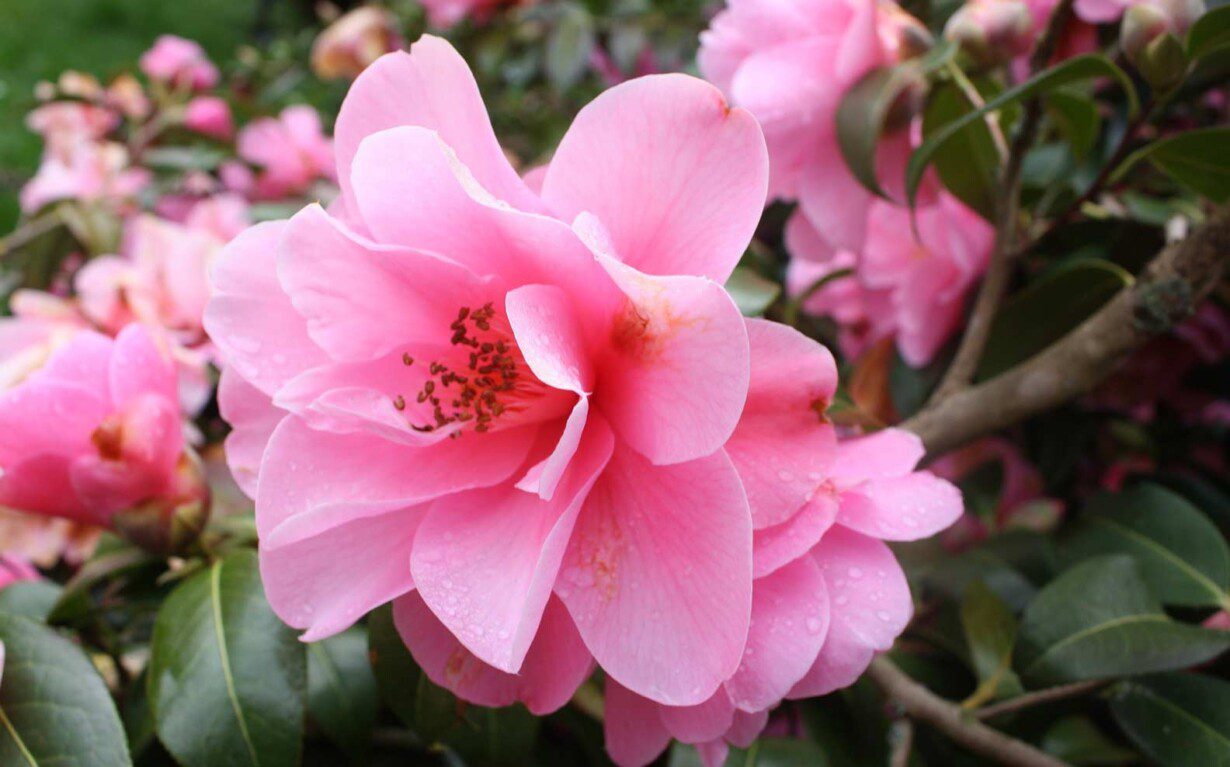It’s officially the spring season, which means it’s the perfect time to put some thought and energy into your at-home garden! Forever Balboa Park asked board member and master gardener Lynn Langley for a tip on how to cultivate a southern Californian garden in spring.
Gardeners are always on the lookout for beautiful blooming plants that provide flowers throughout the year. During the winter season and even into spring, camellias are bright beacons of color amongst an otherwise dormant, leafless, or bloomless palette of plants.
Camellia japonica is the most popular cultivar of camellia, with thousands of varieties. Especially valuable is the camellia’s preference for shade or filtered sun. They may tolerate more sun in coastal areas.
Some varieties can grow fairly large, but this size can be managed with pruning. Pruning should occur after they have finished blooming. Most varieties begin blooming between December and February, and continue to bloom for about three months. They grow well in pots or in the ground, making them useful for smaller San Diego gardens.
Camellias prefer to be kept moist but not wet. During their blooming season, plan on watering camellias once every week to week and a half. Potted camellias will need to be watered more frequently. During hot and dry months, all camellias will need to be watered more frequently.
Camellias like soil on the acidic side, much like azaleas, as it increases their ability to absorb fertilizer. Using mulch will help keep the soil cool and retain moisture. They should be fed about three times a year, beginning in mid-March, again in late May, and then finally in early July. To make it easy to remember, plan on fertilizing on St. Patrick’s Day, Memorial Day, and July 4. You are then finished for the year.
Fertilizer should be for acid-loving plants. A recipe for a very effective fertilizer is as follows: 4 parts cottonseed meal, 1 part blood meal, and a few spoonfuls of ironite or sulfate of iron. Move the mulch out of the way before sprinkling the fertilizer directly on the soil, gently scratching it in, watering the plant, and then moving the mulch back in place. Too little fertilizer will result in yellowing of the outside of the leaves; too much can burn the leaves or cause brown spots.
Camellias prefer routines, so try to follow a schedule for pruning and fertilizing. This practice will reward you with copious amounts of magnificent blooms in late winter/early spring, as your garden will smile with winter color.
